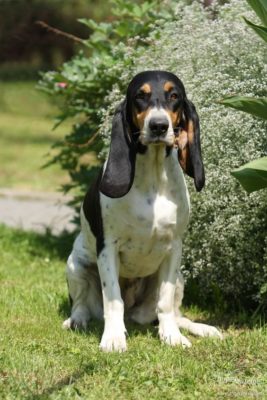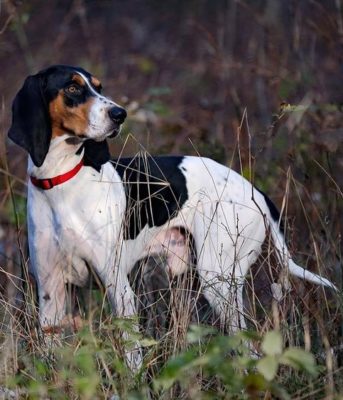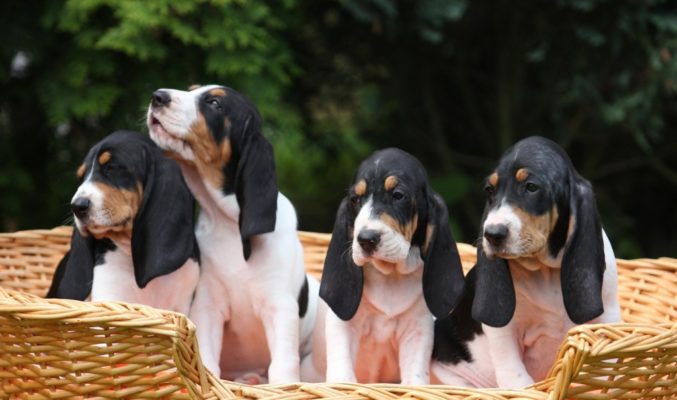Bernese Hound
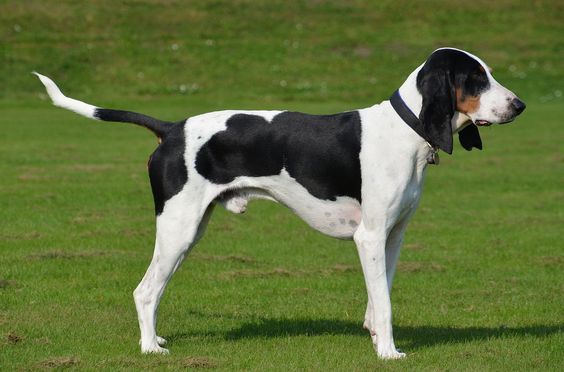
In the hunt, the Bernese Hound shows its true character. Purposefulness, strength, and courage move it during the pursuit of prey. Previously Swiss hounds were used for pack hunting. Now they mainly hunt alone on roe deer, hare, or fox. The dog is excellent with its voice and uses it as a powerful tool.
Table of Contents
Breed Information
| Another Name | Berner Laufhund |
| Origin | Switzerland |
| Height | Males 49-59 cm Females 47-57 cm |
| Weight | 15-20 kg |
| Fur | Short, tight, well-fitting |
| Color | Tri-color, white background has white spots, possible bright red underpants |
| Lifespan | 12-14 years |
| FCI Classification | Scent hounds and related breeds |
| Group | Hunting dogs |
| Price | From $500 |
Breed Photos
Origin History
The outstanding features of the Swiss Hound were noticed by the Italians already in the XV century. And the very first images of dogs very similar to this breed were found on a mosaic from the Roman period in Switzerland.
Much later, the selection was influenced by French hounds brought to Switzerland. Thus, four types of Swiss Hound are officially recognized in 1933, united in a single standard. All species are very similar to each other in the body but differ in color.
Appearance
The back of the nose is slightly convex. Teeth strong, bite full. The zygomatic arches do not protrude. The eyes are oval in shape, mostly dark in color. The ears are planted below the eyes’ level, curled into a tube at the base and hanging. Rounded at the ends, covered with short hair.
The neck is long, muscular, but elegant. The back is strong and straight. The flexible loin is in harmony with the deep chest and trimmed belly. The tail is saber-shaped and harmoniously continues the line of the body. The coat is short, dense, and well-fitting. The color is tricolor, with white spots on a white background, and bright red underparts are possible.
Character
In the hunt, the Bernese Hound shows its true character. Purposefulness, strength, and courage move it during the pursuit of prey. Previously Swiss hounds were used for pack hunting. Now they mainly hunt alone on roe deer, hare, or fox. The dog is excellent with its voice and uses it as a powerful tool.
Today, the Hound is often bred as a companion to his family. It is a loyal and intelligent dog. The pet behaves quietly and obediently in the home, but it mostly depends on the upbringing itself. To avoid depressive homesickness, the Hound needs to provide a large territory and not bring it into the apartment. The Bernese Hound needs personal space, which it will skillfully defend.
The dog is very friendly to people he knows. Children can safely leave the dog to play with him; he usually does not show aggression. But this is all very individual and depends on the nature of the dog itself.
The Bernese Hound sometimes shows its stubborn character, can suddenly refuse to follow the owner’s instructions. It happens because, during the hunt, the dog must focus on the prey and not notice anything around. Education and training will be able to correct the behavior of the Hound.
The Hound depends on its owner, whom it chooses for life. It can relate well to other family members, but truly loves only the person who in childhood went through all the stages of learning the big world with it. Therefore, it is best not to leave the Hound all alone for a long time. She can use her deep bark to attract attention.
Care
A hound’s coat does not require any special care. It only needs to be combed out during shedding with a special brush. Like many dogs, the ears of the Bernese Hound can accumulate dirt. They should be cleaned with a damp cloth and checked regularly. It will prevent infection and inflammation of the ear. Always inspect your pet’s fur for ticks after a walk.
This breed is not meant to live in an apartment. It needs plenty of walking and serious exercise. Visiting special dog playgrounds will be an excellent alternative for the pet. The Bernese Hound’s ideal place to live would be in a home with a spacious area and its insulated aviary.
Training
Training a dog is an important step in the development of its character. The Bernese Hound usually has no problems with this process. The responsive and intelligent dog quickly learns new commands and can take part in hunting from seven months of age. By about one year of age, the Hound should know basic commands and obediently behave on a walk. Sometimes the pet may show independence and stubbornness, which is evident because of the Hound’s hunting purpose. Tactics with encouragement can be a great way to cement success.
Common Diseases
The Bernese Hound has a strong immunity. It is a very hardy dog; it is not afraid of any weather conditions. However, it is not good for the Hound to be in the sun for too long; there is a chance of getting heatstroke. The Hound’s ears often suffer from ear infections. If you find redness during an examination after a walk, you should contact your veterinarian.
Here are the diseases to which the Bernese Hound is prone to develop:
- conjunctivitis;
- ear infections;
- glaucoma;
- arthritis.
Nutrition
Your pet’s diet should be energy-packed and high in vitamins. Do not feed your pet fatty meats such as pork. Many pets love cottage cheese; it contains the right amount of protein. On the meat, broth can be given soup, cook porridge separately. If you decide to provide bread to the pet, it should be previously soaked broth. Water for the pet should be freely available.
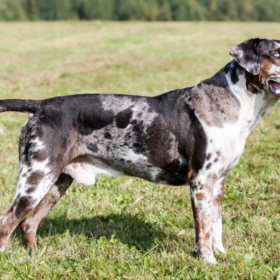 Catahoula Leopard Dog
Catahoula Leopard Dog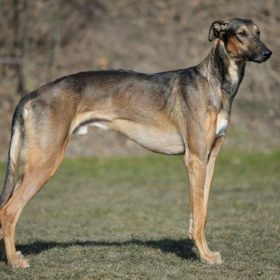 Chortai
Chortai Tatra Shepherd Dog
Tatra Shepherd Dog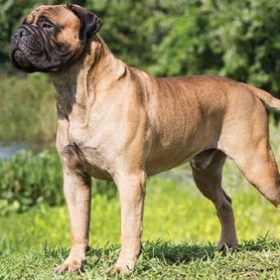 Bullmastiff
Bullmastiff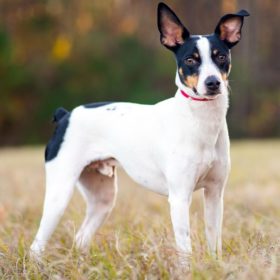 Rat Terrier
Rat Terrier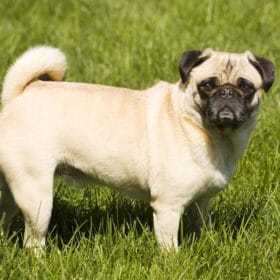 Pug
Pug